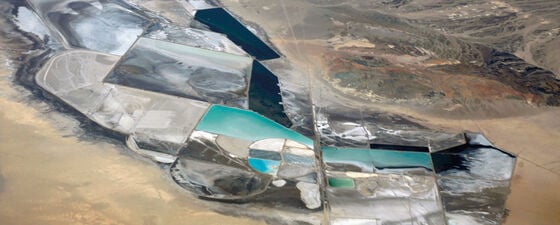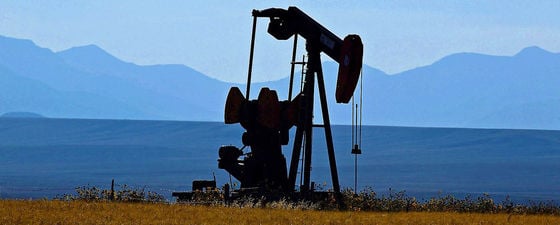“The world is now looking to heavy oil to provide secure sources of supplies,” explains Pete Stark, Vice President of Industry Relations with IHS, who has been observing developments of the hydrocarbon industry for more than 40 years. “Global discoveries have failed to replace oil production for more than twenty years, while long-term oil demand is expected to increase by about 1.2% per year. There is concern that conventional oil resources will not be able to meet growing worldwide requirements, so the 4,800 billion barrels of heavy and ultra-heavy oil (bitumen) which have already been identified must be viewed as important and economically attractive components of future oil supplies.”
Expanding role of heavy oil
Large national and international oil companies are increasing their heavy oil holdings as a means to ensure ongoing resources. “In the effort to secure long-term oil supplies, there has been a significant ramp up of heavy oil projects throughout the world,” Pete continues. “This is indicated by activities in Colombia and Peru, offshore Brazil, the Congo, a development plan for heavy oil at Hebron, offshore Newfoundland, some activities in Oman and budding interest in Kuwait’s deep heavy oil resources.”
“However, the challenge we face is not so much finding the fields, as boosting production from the known resources, so that heavy oil can help offset production declines and meet projected annual demand growth, which suggests that we will require 5 to 7 MMb pd of new liquids capacity each year until at least 2020. The low initial primary recovery factor, often less than 10%, commonly experienced with heavy oil reservoirs, is an issue which must be resolved. Heavy oil from discovered fields will contribute valuable new supplies, but at present recovery rates this production represents less than 8% of the projected liquid demand requirements – far less than would be expected, considering the size of the resource.”
“Moreover, rising costs, shortages of manpower and materials, political uncertainties, environmental regulations and climate change policies could hinder the attainment of even the potential 400 MMbpd of annual growth in heavy oil production anticipated from the known giant heavy oil deposits in Western Canada and Venezuela. Policy makers and the petroleum industry are challenged to create an investment and operating environment conducive to substantially expanding the role of heavy oil supplies in the future.”
 Other important heavy oil resources have been identified in North America, the Former Soviet Union, the Middle East and China. Outside North America and Venezuela, the IHS database identifies 1,620 heavy oil fields (20° API gravity or less) with 134 Bbo of P2 net recoverable heavy oil reserves. Source: IHS
Other important heavy oil resources have been identified in North America, the Former Soviet Union, the Middle East and China. Outside North America and Venezuela, the IHS database identifies 1,620 heavy oil fields (20° API gravity or less) with 134 Bbo of P2 net recoverable heavy oil reserves. Source: IHS
Orinoco Heavy Oil Belt
 Heavy oil is projected to add 2.6 MMbpd of productive capacity – 31% of the incremental crude oil increase and 11% of total liquids incremental capacity increase to 2020. Source: CERAVenezuela’s oil sands – the Orinoco Heavy Oil Belt, known as the Faja – harbour the majority of the extra-heavy oil discovered globally, with 1,300 Bbo demonstrated in-place and 272 Bb recoverable. The belt extends into Colombia, Ecuador and Peru where almost 30 Bb of additional resources have been identified.
Heavy oil is projected to add 2.6 MMbpd of productive capacity – 31% of the incremental crude oil increase and 11% of total liquids incremental capacity increase to 2020. Source: CERAVenezuela’s oil sands – the Orinoco Heavy Oil Belt, known as the Faja – harbour the majority of the extra-heavy oil discovered globally, with 1,300 Bbo demonstrated in-place and 272 Bb recoverable. The belt extends into Colombia, Ecuador and Peru where almost 30 Bb of additional resources have been identified.
“Venezuelan extra-heavy oil production grew from about 220 Mbopd in 2000 to about 660 Mbopd in 2005,” Pete explains. “The Venezuelans then announced plans to increase production, aiming to reach 1.9 MMbpd by 2012, which they hoped to achieve through the introduction of artificial lift and multilateral horizontal wells, steam- assisted gravity drainage and upgrading technologies. However, political and fiscal changes meant that major operators left the area, and increased costs and shortages of manpower and materials have delayed investment in technology. It is doubtful they will be able to achieve the growth target.”
Canada holds massive bitumen reserves
 Heavy and extra-heavy oil deposits are widespread, occurring in 127 basins according to the USGS. Nearly 4,800 billion barrels of bitumen and ‘heavy oil’ have been identified worldwide. Source: IHS compiled from published sourcesThe other major country in the heavy oil scenario is Canada, where the oil sands host at least 1,700 Bb of bitumen in-place, but, demonstrating the productivity issue, only an estimated 178 Bb of this is considered recoverable. Bitumen resources have also been identified in the U.S., Russia, Venezuela, Trinidad and Tobago, Nigeria, Zaire, Madagascar and China.
Heavy and extra-heavy oil deposits are widespread, occurring in 127 basins according to the USGS. Nearly 4,800 billion barrels of bitumen and ‘heavy oil’ have been identified worldwide. Source: IHS compiled from published sourcesThe other major country in the heavy oil scenario is Canada, where the oil sands host at least 1,700 Bb of bitumen in-place, but, demonstrating the productivity issue, only an estimated 178 Bb of this is considered recoverable. Bitumen resources have also been identified in the U.S., Russia, Venezuela, Trinidad and Tobago, Nigeria, Zaire, Madagascar and China.
Driven by high oil prices, supportive government policies and the rapid evolution of upgrading and processing technologies, plus the expansion of exports, Canada boosted its bitumen production from about 210 MMbo in 2000 to over 400 MMbo in 2006. IHS have estimated that this could increase to at least 2.8 MMbpd, or even 4 MMbpd, by 2015, if all projects proceed as planned.
Significant challenges exist for Canadian bitumen producers, however, as Pete explains. “Costs have escalated, and shortages of manpower and materials, as well as higher royalties, could increase costs further. There are socioeconomic concerns, as local communities and infrastructure are strained to accommodate the expanding oil sands workforce. Water usage, greenhouse gas emissions, forest fragmentation, carbon capture and storage and waste water disposal are among the many environmental issues facing bitumen producers. Further downstream, cost effective oil sands projects must link production to specific refineries that can handle diluted bitumen and synthetic crude oil.”
Innovative technologies sought
Pete points out that unconventional oil resources are huge and new technologies have already enabled operators to produce from unconventional reservoirs that only a few years ago were considered as interesting but non-commercial deposits.
“It is clear that unconventional oil resources will contribute critical new oil supplies,” he concludes. “To meet its fair share of future oil supplies, however, the annual growth of unconventional oil production must increase from 400,000 bpd to about 2 MMbpd, and it is vital that new technologies and processes are developed to increase the rate of production growth from these resources. Such solutions will increasingly require the implementation of innovative technologies, continuous process improvement and open collaboration between resource holders, policy makers, regulatory agencies, stakeholders in environmental and community concerns, consumers and producers.”




